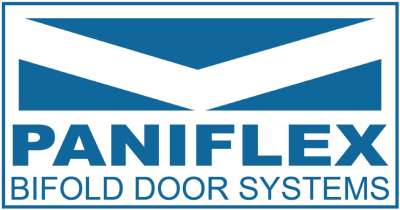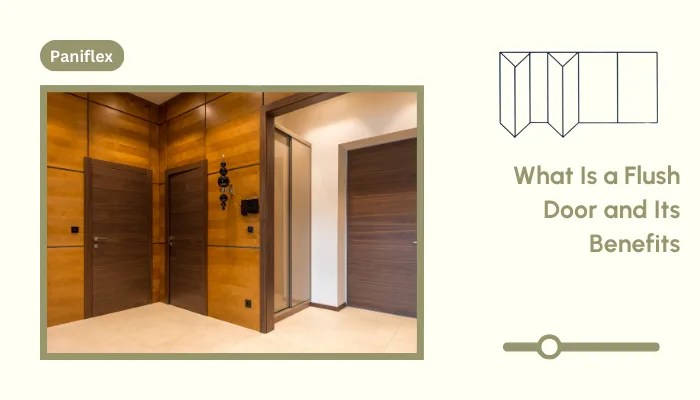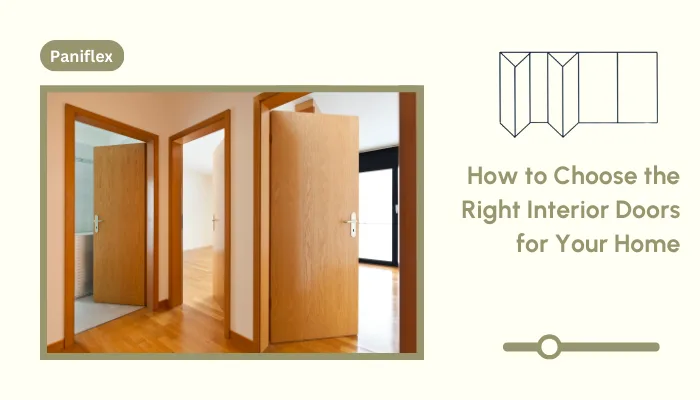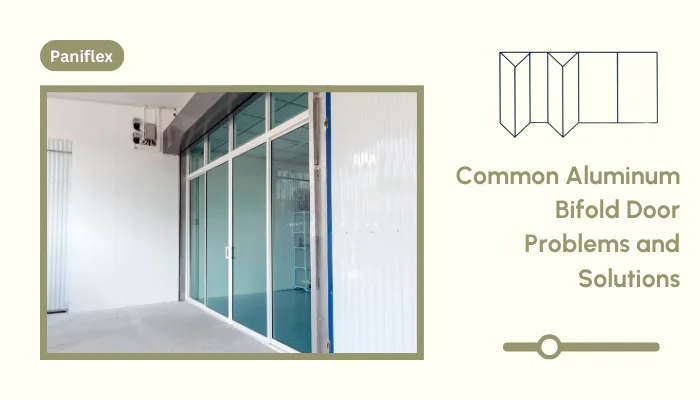A poorly placed knob on a bifold door can be a daily frustration. If it is too high, opening the door feels awkward. Too low, and you are bending down every time you reach for it. Misalignment can cause uneven folding, leading to unnecessary wear on the door panels.
Proper knob placement is not just about looks—it directly impacts ease of use and the longevity of the door. A well-positioned knob ensures smooth operation, prevents strain on the hinges, and maintains the door’s structural integrity over time.
Whether you are installing a new set of bifold doors or replacing old knobs, accuracy is key to avoiding long-term issues. This article describes how to select an appropriate placement and properly install knobs for smooth operation.
Ready to experience the benefits of custom closet doors? Explore our range of Paniflex products now.
Standard Knob Placement Guidelines
Knob placement may seem like a minor detail, but getting it wrong can lead to daily frustration. Incorrect placement can disrupt the door’s folding motion, causing misalignment that wears down the hinges over time.
While there is some flexibility in where knobs can be placed, there are industry-standard measurements that ensure both comfort and functionality.
- Height from the Floor: The most widely accepted height for bifold door knobs is 36 inches from the floor. This aligns with standard doorknob height and provides a comfortable grip for most users.
- Distance from the Edge: Knobs should be installed 1 to 2 inches from the vertical edge of the leading door panel. This position allows easy access without interfering with the door’s folding motion.
- For Double Bifold Doors: If your bifold doors consist of two connected panels that meet in the middle, the knobs should be placed symmetrically on each center panel to maintain balance.
Before you start drilling, it is essential to understand the best placement guidelines. Standard placement rules ensure a seamless and efficient experience.
These placement guidelines work well in most cases, but some factors may require slight adjustments. Next, we will explore what influences knob placement and when standard guidelines need modification.
Suggested Read: Explore our convenient guide for residential bifold door installations.
Factors That Influence Knob Placement
While standard knob placement guidelines offer a reliable starting point, no two bifold doors are exactly the same. If the door panels are wider than usual, placing the knob too close to the edge might make opening them awkward.
If the knob style is recessed, flush, or oversized, it may require a different placement than a standard round knob.
Several factors can influence where the knob should be positioned for optimal functionality and ease of use.
- Door Size and Panel Width: If you have extra-wide bifold panels, positioning the knob too close to the edge may reduce leverage. Moving it slightly inward can make the door easier to open.
- Knob Type and Design: Recessed knobs, flat handles, and protruding round knobs all affect how much space is needed for a comfortable grip. Some styles require different placements to ensure accessibility.
- User Accessibility Needs: If children, seniors, or individuals with mobility limitations will be using the doors, lowering the knob slightly (around 32 inches from the floor) can make it easier to reach.
- Custom Aesthetic Preferences: Some homeowners prefer centered placement on the panel rather than near the edge. While this is visually unique, it may impact ease of use and functionality.
Suggested Read: Want to learn the right way of measuring bifold doors? Check out this guide.
Considering these factors ensures that your knob placement aligns with both practical needs and design preferences. Knob placement is not a one-size-fits-all decision. Making small adjustments based on these factors can improve functionality, ergonomics, and aesthetics.
Now that placement is covered, it is time to focus on the correct installation for a secure and functional fit.
Recommended Watch: For a visual demonstration of how to properly locate and install knobs on bifold doors, check out this detailed video.
Step-by-Step Guide to Installing Knobs on Bifold Doors
A well-installed knob ensures smooth operation, a firm grip, and long-term durability. Whether working with wood, MDF, or mirrored bifold doors, the key is to measure accurately, drill carefully, and properly secure the hardware.
Follow this step-by-step guide to install your bifold door knob the right way, ensuring a professional finish and a hassle-free experience.
Step 1: Gather the Necessary Tools and Materials
Before you begin, ensure you have everything needed for a precise and secure installation. Using the right tools will help prevent mistakes and ensure a clean, professional result.
Tools You Will Need:
- Measuring tape: For accurate placement.
- Pencil or marker: To mark the drilling point.
- Drill and drill bit: A 3/16-inch bit works for most knobs, but check the manufacturer’s recommendations.
- Screwdriver: To tighten the knob securely.
- Level: To ensure alignment, especially on double-panel doors.
Materials Required:
- Door knob: Ensure it fits the door’s thickness.
- Screws or mounting hardware: Usually included with the knob.
- Masking tape (optional): Helps prevent splintering when drilling into wood or MDF.
With your tools and materials ready, the next step is to measure and mark the correct placement to ensure accuracy before drilling.
Step 2: Measure and Mark the Knob Placement
Accuracy is important when marking the placement of your knob. Even a small misalignment can cause the door to feel unbalanced or difficult to open.
How to Measure Correctly:
- Identify the Placement: Consult your selected placement guidelines (usually 36 inches from the floor and 1 to 2 inches from the panel edge).
- Use a Measuring Tape: Measure from the floor to the panel edge inward, marking the exact spot with a pencil.
- Check for Symmetry: If you are installing knobs on double-panel bifold doors, ensure both knobs are placed at the same height and distance from the edge for a balanced look.
- Use a Level (If Necessary): A level ensures the markings align perfectly, preventing an uneven appearance.
Pro Tip: If you are working with a mirrored or glass door, use masking tape over the drilling spot to reduce the risk of cracks or chips.
With the placement marked, you are ready for the most critical part—drilling the hole without damaging the door.
Step 3: Drill the Hole for the Knob
Now that you have marked the placement, the next step is to drill the hole. This step requires precision to prevent splintering, cracking, or misalignment.
How to Drill the Hole Properly:
- Choose the Right Drill Bit: Most knobs require a 3/16-inch or 1/4-inch drill bit, but check the manufacturer’s specifications.
- Secure the Door Panel: Place the door on a stable surface or keep it closed to prevent unnecessary movement.
- Use Masking Tape (If Needed): If drilling into wood, MDF, or mirrored surfaces, place masking tape over the marked spot to reduce splintering or cracking.
- Drill at a Low Speed: Position the drill perpendicular to the surface and apply steady pressure. Start slowly to avoid damaging the material.
- Drill All the Way Through: Ensure the hole is cleanly drilled from one side to the other.
Pro Tip: Use a special glass/tile drill bit and apply light pressure to avoid breakage for mirrored or glass bifold doors.
With a clean hole drilled, the next step is attaching and securing the knob properly to ensure a firm, long-lasting fit.
Step 4: Attach and Secure the Knob
Now that the hole is drilled, it is time to install the knob and ensure it is firmly secured for smooth operation.
How to Attach the Knob:
- Insert the Screw Through the Hole: From the back of the panel, insert the included screw through the drilled hole.
- Align the Knob on the Front Side: Place the knob over the screw and hold it in position.
- Tighten the Screw: Using a screwdriver, tighten the screw until the knob sits securely against the door. Avoid overtightening, as it may damage the panel.
- Check for Stability: Gently pull and turn the knob to ensure it is firmly attached and does not wobble.
Pro Tip: If the knob feels loose, consider using a rubber washer between the knob and the door for added grip.
Now that the knob is installed, the final step is to test the door’s movement and make minor adjustments if necessary.
Step 5: Test and Adjust for Smooth Operation
A newly installed knob should not only look great but also function effortlessly. Before calling it done, check the door’s operation and make adjustments.
How to Test the Door Properly:
- Open and Close the Door Several Times: Ensure the knob provides a comfortable grip and does not interfere with the door’s folding motion.
- Check for Panel Misalignment: If the doors are not folding evenly, confirm that the knobs are placed symmetrically.
- Tighten or Loosen as Needed: If the knob feels loose, re-tighten it gently. If the door panels pull unevenly, check if repositioning is required.
- Ensure a Clean Finish: Wipe away any pencil marks or debris from the drilling process.
Pro Tip: If the knob is making the door difficult to open, double-check its placement. Sometimes, shifting it slightly closer to the edge can improve leverage.
With the knob installed and tested, you now have a functional, well-positioned, and durable bifold door knob that enhances both usability and aesthetics.
Installing a bifold door knob is a straightforward task, but small mistakes can lead to long-term frustrations. Misalignment, incorrect drilling, or poor positioning can make the door difficult to operate and affect its durability.
Let us go over the common mistakes to avoid when installing bifold door knobs.
Avoiding Common Knob Placement Mistakes
Even with the most careful installation process, you can make mistakes. These issues are not just minor inconveniences—they can affect the lifespan and functionality of your bifold doors. Fortunately, avoiding them is simple if you know what to watch out for.
Here are some of the most frequent errors to watch out for:
- Placing the knob too far from the edge: This makes the door harder to pull open and reduces leverage, requiring extra effort to fold the panels properly.
- Installing the knob off-center on double doors: Uneven placement creates an imbalance, making one side harder to move than the other.
- Ignoring door thickness: Using a knob that is too deep for a thin bifold panel can cause installation issues or even damage the door surface.
- Not measuring both doors accurately: Misalignment between the two doors can lead to uneven folding and gaps between panels.
To avoid these issues, precise measuring and marking are critical. However, small placement errors can lead to big usability issues.
From the Community: Read this Reddit discussion for real-world troubleshooting tips for avoiding installation roadblocks.
For homeowners and professionals looking for high-quality bifold doors that combine functionality with style, Custom Door & Mirror provides expertly crafted solutions. Their precision-engineered doors are designed to work seamlessly with properly installed hardware and ensure long-lasting performance.
Whether upgrading an existing door or installing a new one, investing in Custom Door & Mirror’s premium bifold doors guarantees a polished and reliable finish.
Ready to experience the benefits of custom closet doors? Explore our range of Paniflex products now.
Conclusion
A well-installed bifold door knob is more than just a finishing touch—it directly impacts the functionality, ease of use, and longevity of your doors. Proper placement ensures smooth operation, while a secure installation prevents long-term issues like misalignment or excessive wear.
Whether you are replacing an old knob or installing a new bifold door, you need to focus on quality. Choosing Custom Door & Mirror for your bifold door needs ensures an irreproachable experience from start to finish.
With expertly crafted doors designed for durability and style, you can trust that your bifold doors will look great and function effortlessly for years to come.
Are you seeking high-quality, customizable bifold doors that perfectly fit your space? Explore Custom Door & Mirror’s collection or schedule a consultation today.






